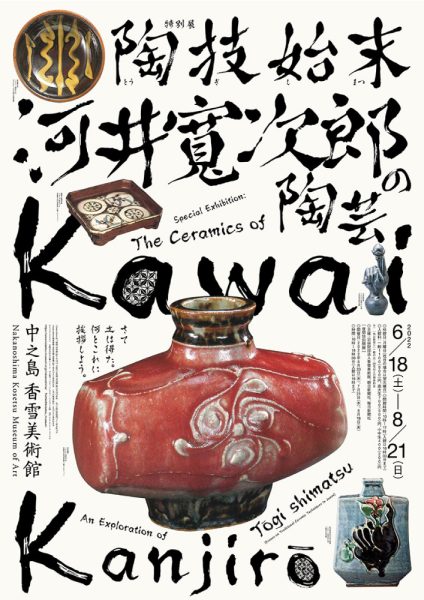Kanjiro Kawai (1890-1966) is one of the ceramic artists who have been attracting increasing attention in recent years due to the "Mingei" (folk art) boom. Kawai was born in Yasugi, Shimane, and entered the Ceramics Department of Tokyo Higher Technical School (now Tokyo Institute of Technology) to study ceramics. In 1914, he joined the Kyoto Municipal Ceramics Testing Institute, and in 1914, he obtained a kiln on Gojozaka in Kyoto and established himself as an independent potter, naming it "Shokei Kiln," and remained active in Kyoto until his death.
In his early years, he used a variety of glaze techniques and modeled his work after old Chinese ceramics. However, an encounter with the thinker Yanagi Muneyoshi led to the publication of "Prospectus for the Establishment of the Japan Folk Art Museum" in 1926, jointly with Yanagi and the ceramic artists Tomimoto Kenkichi and Hamada Shoji. He made a major shift in his style to a simple taste based on the "beauty of use," and became a central figure in the folk art movement. After the war, he developed sculptural ceramic work with no specific purpose.
The exhibition traces Kawai's creative activities from the beginning to the end of his career, with a focus on his previously unexhibited ceramic works.
Information about the Exhibition
〈Dates〉
Jun 18 (Sat) 2022-Aug 21 (Sun) 2022 10:00-17:00
Until 19:30 on June 23, July 21 and August 18.
〈Closed〉
Monday
Open on a public holiday Monday but closed on the following day.
Closed during the New Year holidays and in between exhibitions.
